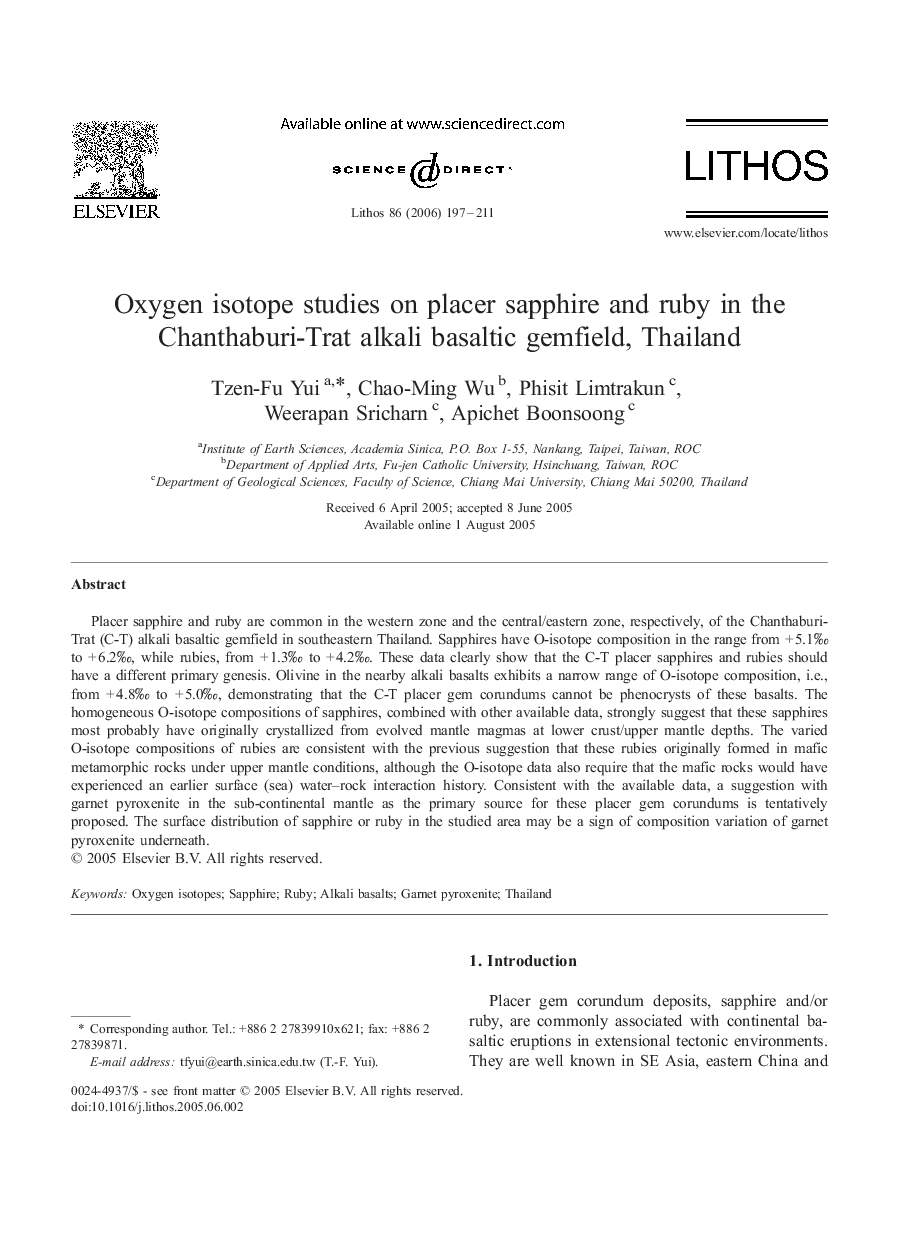| کد مقاله | کد نشریه | سال انتشار | مقاله انگلیسی | نسخه تمام متن |
|---|---|---|---|---|
| 4718083 | 1638784 | 2006 | 15 صفحه PDF | دانلود رایگان |

Placer sapphire and ruby are common in the western zone and the central/eastern zone, respectively, of the Chanthaburi-Trat (C-T) alkali basaltic gemfield in southeastern Thailand. Sapphires have O-isotope composition in the range from + 5.1‰ to + 6.2‰, while rubies, from + 1.3‰ to + 4.2‰. These data clearly show that the C-T placer sapphires and rubies should have a different primary genesis. Olivine in the nearby alkali basalts exhibits a narrow range of O-isotope composition, i.e., from + 4.8‰ to + 5.0‰, demonstrating that the C-T placer gem corundums cannot be phenocrysts of these basalts. The homogeneous O-isotope compositions of sapphires, combined with other available data, strongly suggest that these sapphires most probably have originally crystallized from evolved mantle magmas at lower crust/upper mantle depths. The varied O-isotope compositions of rubies are consistent with the previous suggestion that these rubies originally formed in mafic metamorphic rocks under upper mantle conditions, although the O-isotope data also require that the mafic rocks would have experienced an earlier surface (sea) water–rock interaction history. Consistent with the available data, a suggestion with garnet pyroxenite in the sub-continental mantle as the primary source for these placer gem corundums is tentatively proposed. The surface distribution of sapphire or ruby in the studied area may be a sign of composition variation of garnet pyroxenite underneath.
Journal: Lithos - Volume 86, Issues 3–4, February 2006, Pages 197–211